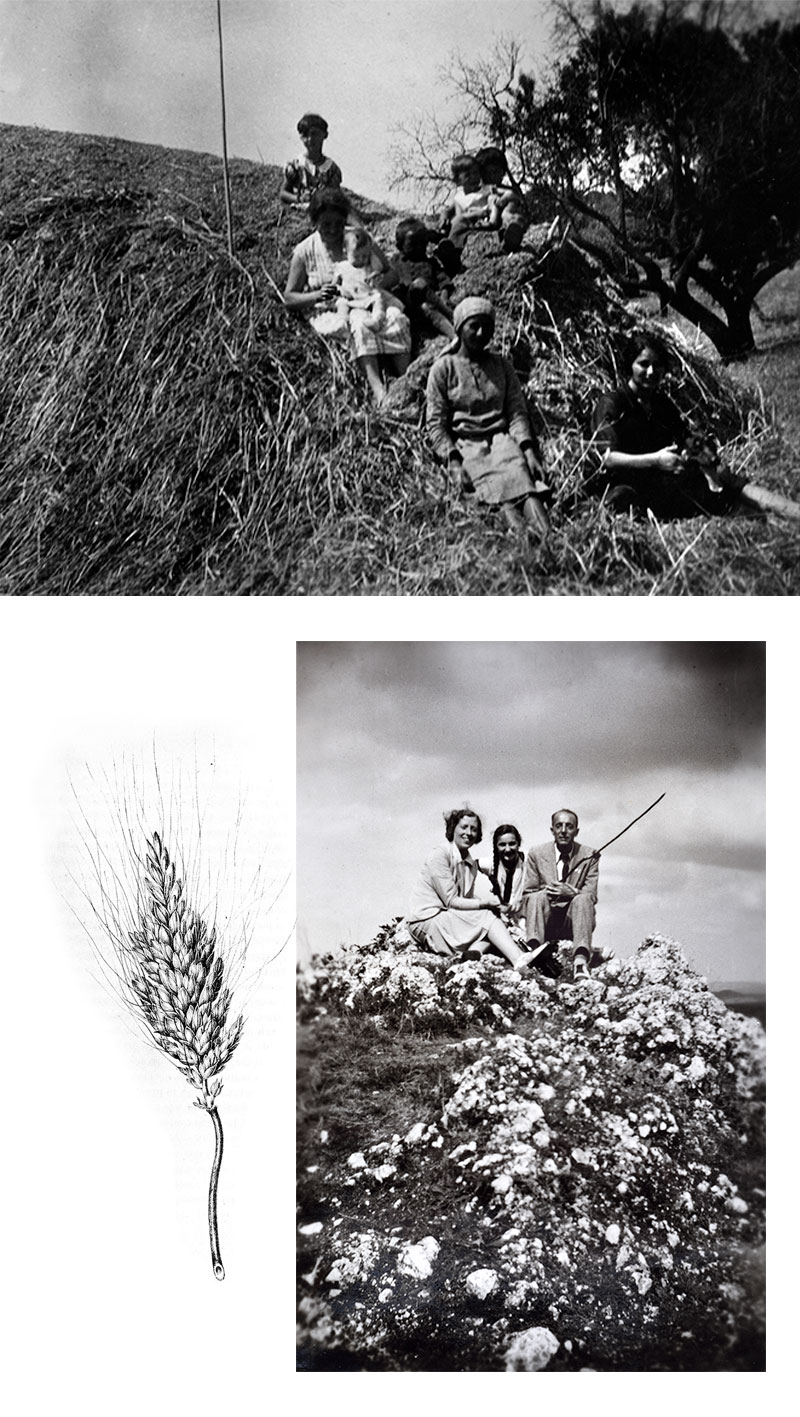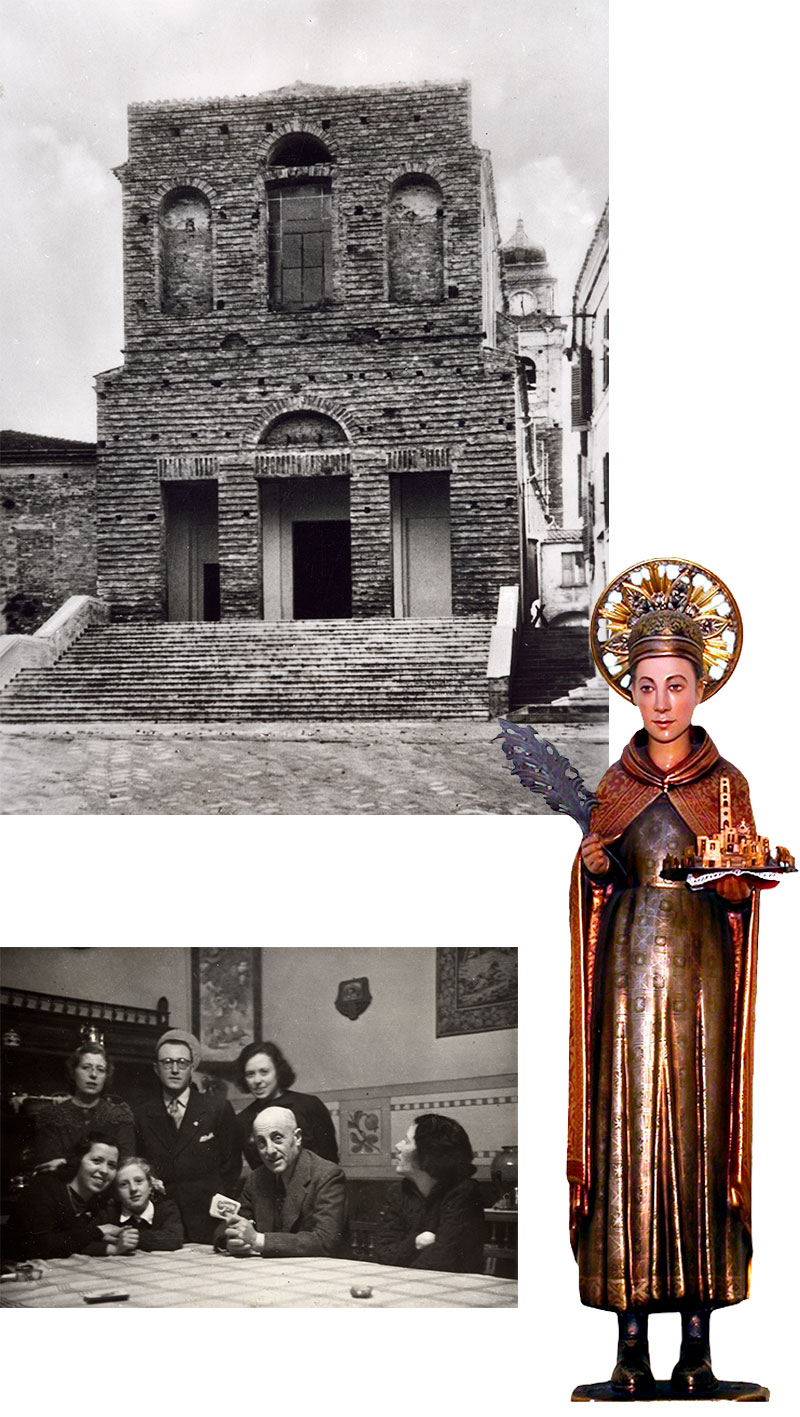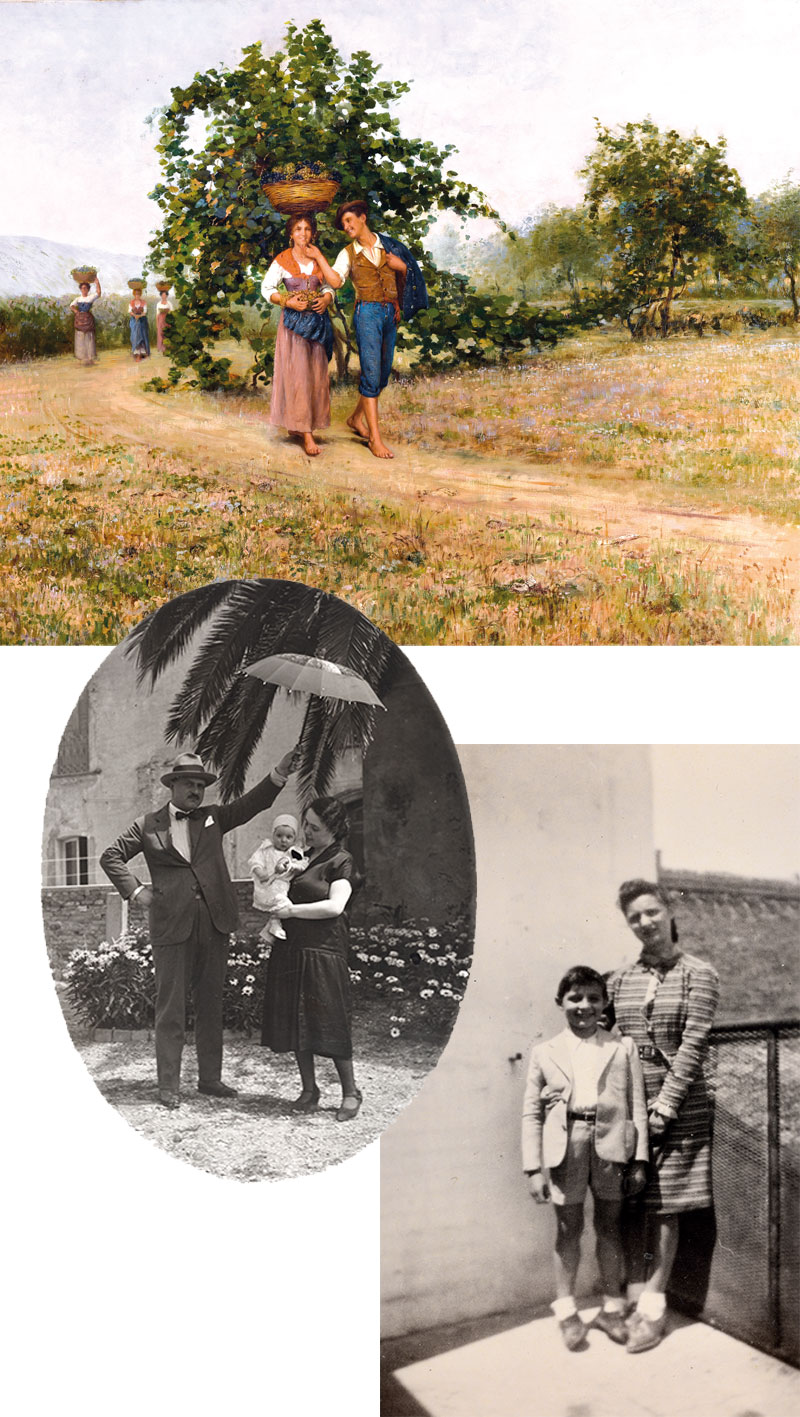Memory
The memories of Giuliana, between territory, traditions and customs

Largo Codacchio
Miglianico
Miglianico is placed on top of a hill between Pescara and Ortona; from the highest quarter called ``Il Codacchio`` you can see the Adriatic sea towards the east and the Maiella massif towards the west. At Codacchio the Church of Saint Michael the Archangel arises: Saint Pantaleon’s Sanctuary; just before it, half way uphill, is the Masci Castle and, joined to the buildings of Piano della Chiesa, in the street once called Via Nord, is the ancient paternal dwelling that dates back to the end of the XVII century
Miglianico
Tomolario
I remember with much embarrassment the Tomolario ceremony. The farmers, to whom the lands had been given through the right of emphyteusis by my grandmother Ernestina, after the harvesting, use to go up to Codacchio to bestow their share of wheat to my father who would wait for them sitting in the widening between our house in via Nord street and the Fondaco. On the pavement of this widening the “pannone” was laid; it was a carpet made of canvas on which the “crivello” was set, a tool of about a metre in diameter, with which the wheat was evaluated before being tipped into containers that served as a measurement and were called in the ancient ascending order of grain measurement: misura, coppa, pezzetto and tomolo. From the latter measure, which was the most consistent, the term Tomolario originated. My father, don Jiustìn, wore a cheap, long and wide yellowy dressing gown to protect himself from the clouds of dust that arose from the wheat during its evaluation and which would penetrate everywhere and I was very embarrassed to see him dressed like that. The heat was really oppressive and we were continuously annoyed by flies.


village festival
Saint Pantaleone
After the tomolario was collected, life returned to its quiet and daily routine awaiting for the big celebration of Saint Pantaleone, the patron saint of Miglianico, which lasted, as nowadays, from 26th to 28th July. The statue of Saint Pantaleone, with its enigmatic Byzantine features, is preserved in a magnificently carved gilt wooden shrine in Saint Michael the Archangel church, which is the Sanctuary dedicated to the former on Miglianico’s hill. The shrine, after July’s big celebration, is displayed to the veneration of the devoted until the end of October when on the last Sunday of the month the “Minuta” event is celebrated, during which the shrine is carried to the small church Delle Piane to commemorate its relocation from the Furnace of Caramanico, where it had been hidden by the Basilian monks to avoid it being stolen during Turkish incursions, in the Sanctuary to him dedicated. The procession, admirably described as an ancestral ritual, close to idolatry, by Gabriele D’Annunzio in the work “S. Pantaleone” in the collection “Le Novelle della Pescara”, published in 1902, sparked the interest of the painter F. P. Michetti who portrayed it in 1883 in a big painting titled “Il voto”, nowadays preserved in the Modern Art Museum in Rome.
Ancient
Harvest
The Harvest was the most important event of the agricultural year. All the land that was not cultivated with vegetables on the level area of the town was covered with canopies: the tendone vine training system that characterized all the landscape in Abruzzo before the introduction of the guyot system. Hills upon hills were dotted with pergolas under which turgid bunches of Montepulciano d’Abruzzo grapes would mature: alternated by the delicious Pergolone grapes, which were soon after sacrificed for Trebbiano, when it ceased to be exported, beautifully packed in magnificent wooden boxes, to Germany: the 'plateau' where women, employed for the purpose, would lay the long golden bunches separated by strips of tissue paper with coloured edges. Grape harvest involved all the families.




